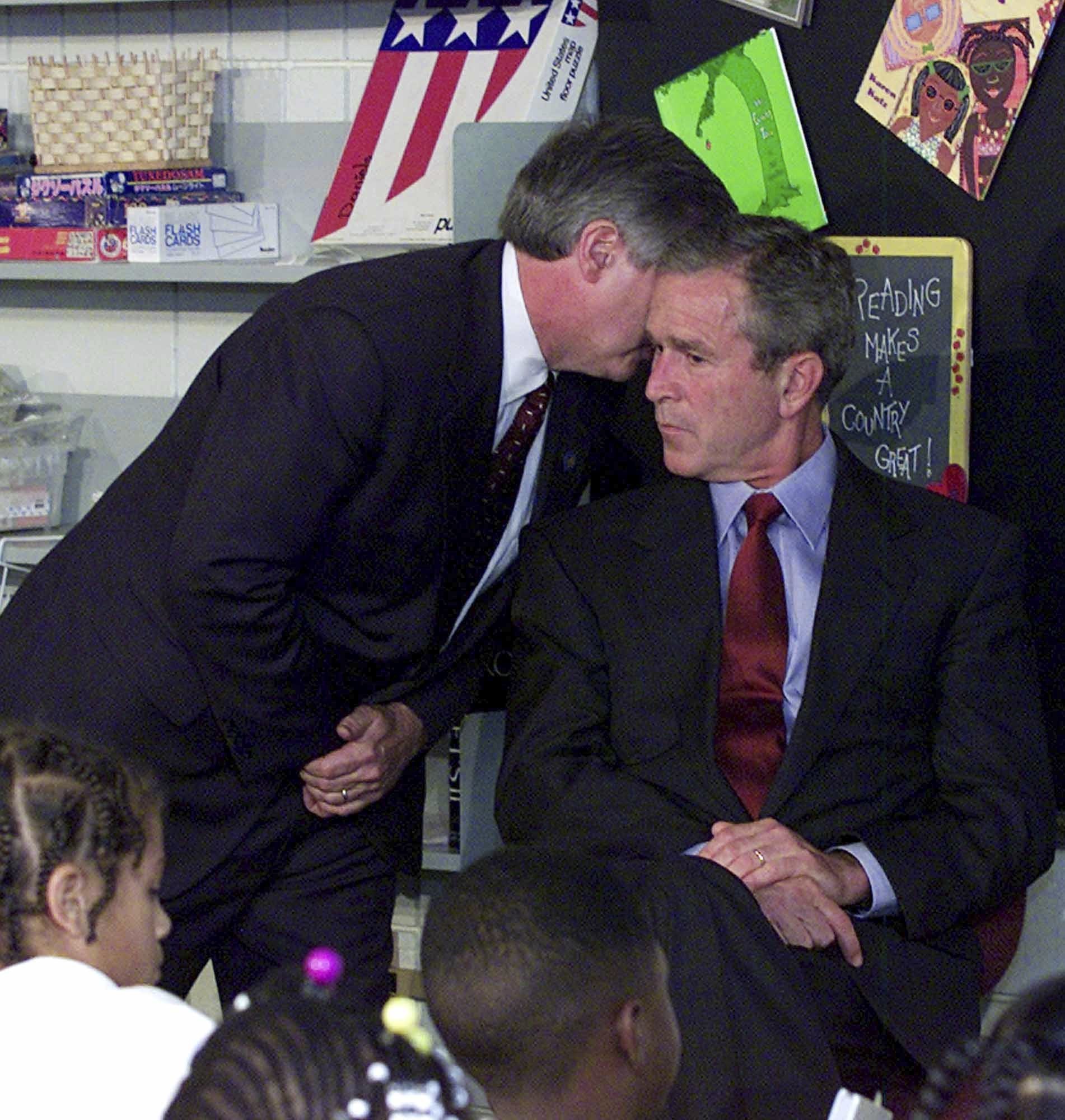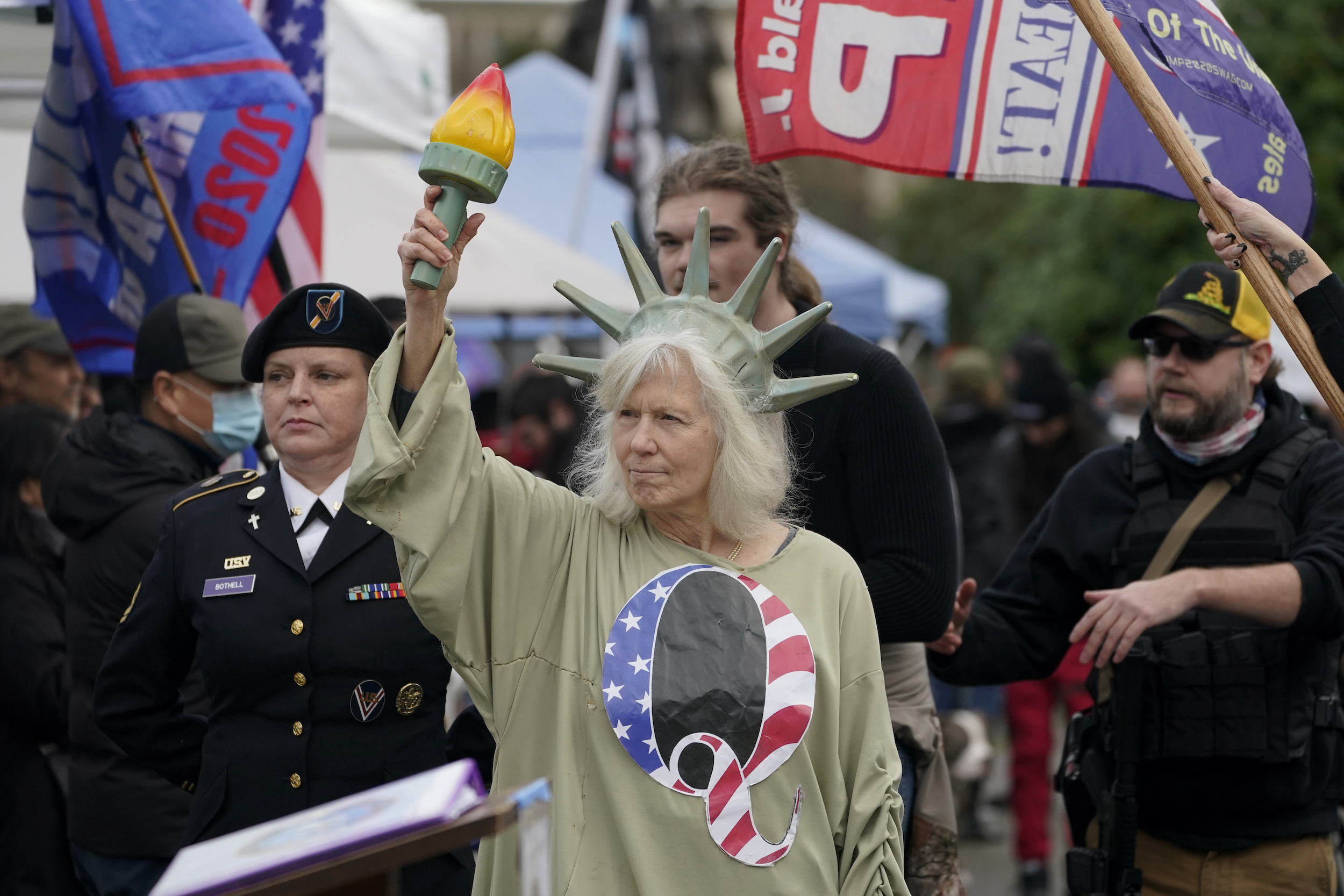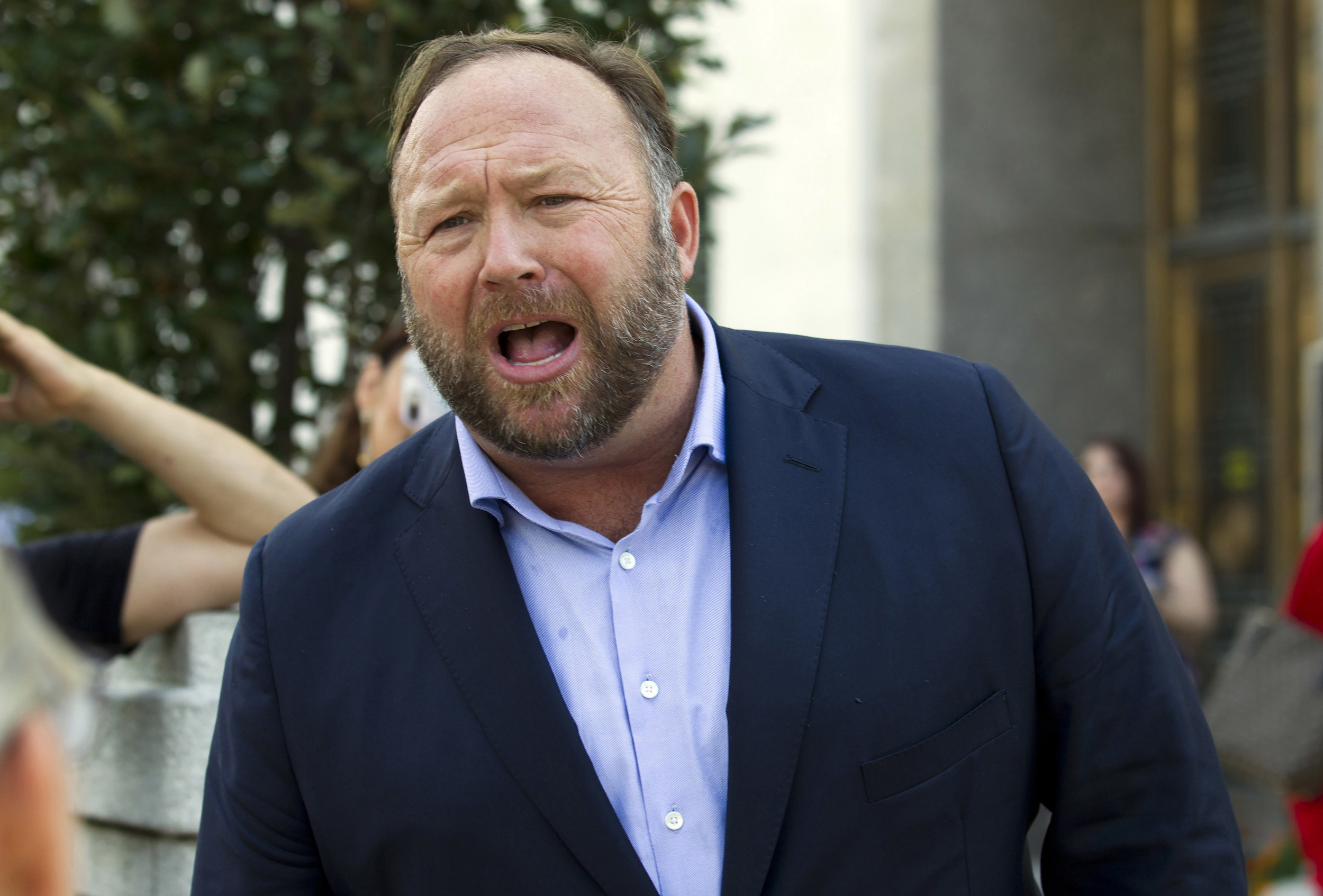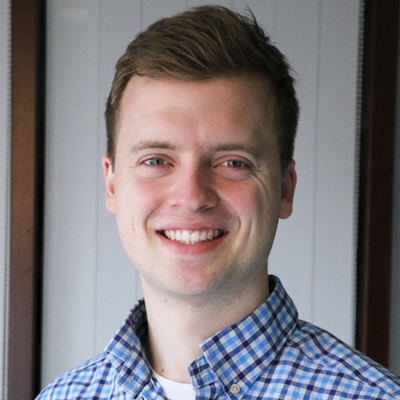Outside the U.S. Capitol on Jan. 6, a New Jersey man held up his hand for a camera as he told a local TV reporter about the chaotic scene he’d just witnessed inside the building.
His palm was smeared with blood — blood that belonged to Ashli Babbitt, the woman fatally shot by law enforcement as she tried to force her way further into the Capitol. “It could have been me, but she went in first,” Thomas Baranyi, 29, said in the interview.
Baranyi said he entered the Capitol to tell Congress that “we need some kind of investigation into this,” suggesting that, like many of the rioters who tore through the building, he believed the false narrative that the election was stolen from former President Donald Trump.
It wouldn’t have been Baranyi’s first time falling for false information. Ten years earlier, he had latched onto another bogus conspiracy theory, according to a childhood friend who spoke to Insider: He had come to believe that the terrorist attacks on Sept. 11, 2001, were staged and part of a false-flag operation.
Scholars who study conspiracy theories say that kind of throughline is familiar. “People who believe in one conspiracy theory are more likely to believe in others,” said Karen Douglas, a professor of social psychology at the University of Kent in the United Kingdom.
But with his 9/11 views, Baranyi is not alone. Twenty years after the attacks shocked the world and left thousands dead, various conspiracy theories questioning the official narrative continue to captivate some Americans.
The attacks and their aftermath also helped reshape, and in some ways turbocharge, the misinformation and conspiracy theory industry — encouraging people to turn to the internet for answers; demonstrating the power of “Plandemic”-style videos; fueling distrust of powerful institutions like the FBI, the intelligence community and the mainstream media; stoking fears of real and perceived enemies, including immigrants, Muslims and the surveillance state; and heightening a feeling of lost control, everywhere from airports to ballgames.
“It is a watershed, a landmark … in the history of conspiracy theories,” said Kathryn Olmsted, a professor of history at the University of California, Davis, and the author of a book on conspiracy theories from World War II to 9/11. “You see an acceleration of previous trends, if not a whole new age of conspiracy theories, after 9/11.”
The post-9/11 world saw the rise of conspiracy theories claiming that President Barack Obama wasn’t born in the U.S., that he was a Muslim born in Kenya and schooled in a madrassa; that the Sandy Hook school massacre and other mass shootings didn’t happen; that a child sex trafficking ring tied to Hillary Clinton was operating out of a pizza shop; that Trump was waging a secret war against an elite group of pedophiles; that the coronavirus pandemic was a hoax and the COVID-19 vaccines carried microchips; and that the 2020 election was stolen from Trump.
It was more than coincidence that such beliefs thrived post-9/11. In several ways, 9/11 planted the seeds for today’s thicket of misinformation, according to experts who study the history, politics and psychology behind conspiracy theories.
‘A world-changing event’: Searching for explanations in times of crisis
A conspiracy theory is an attempt to explain an event with claims that small groups of sinister or powerful people are working in secret, usually against the common good.
“It’s a theory because you can’t necessarily prove it, and it’s a conspiracy because there’s another explanation for how things are occurring,” said Mark Fenster, a professor of law at the University of Florida and author of a book on American conspiracy theories.
People gravitate to conspiracy theories for several reasons, including their need to know the truth and feel safe, said Douglas, who studies the psychology of conspiracy theories. A loss of trust in established institutions makes people more inclined to accept misinformation and conspiracy theories — especially about crises that seem inexplicable.
Conspiracy theories did not originate with the Sept. 11 attacks, of course. They have surrounded sudden crises throughout history, such as the attack on Pearl Harbor that dragged the U.S. into World War II. A few weeks after John F. Kennedy’s assassination — and the point-blank killing of his suspected assassin — about 50% of Americans believed it was the work of a conspiracy rather than a lone gunman, said Joseph Uscinski, a professor of political science at the University of Miami and author on conspiracy theories. By the mid-1970s, that belief had taken hold among 80% of Americans.
“The JFK assassination conspiracy theories were very popular in the 1970s,” Olmsted said. But to really engage with and investigate them, “you had to go to conferences, you had to join a group where they would physically meet.” Some people even traveled to Dallas.
The theories born out of Sept. 11 were different, because they were the first to spread in the internet age, Olmsted said. That made them easier to share for conspiracy theorists, who once had to pester people with flyers to disseminate information about their worldviews.
“9/11 really was the real hinge point between conspiracy theories being a fringe message board and talk-radio phenomenon, and a mainstream issue that we’re still dealing with today,” said Mike Rothschild, the author of a book on the baseless QAnon conspiracy theory.
He added: “9/11 was a massive, world-changing event that seemed to defy explanation — a petri dish for conspiracy theories. And it happened at the same time as the internet was becoming a commonplace and everyday method of communication.”
The 9/11 conspiracy theories, some of which live on with groups such as Architects & Engineers for 9/11 Truth, were wide-ranging. They said that al-Qaida wasn’t responsible; that the military and intelligence community stood down; that it was an inside job; that the buildings collapsed from a controlled demolition; that jet fuel doesn’t melt steel beams; that no Jewish people died; that no plane hit the Pentagon; and that there were no planes at all, just holograms.

FILE – In this Tuesday, Sept. 11, 2001 file photo, Chief of Staff Andy Card whispers into the ear of President George W. Bush to give him word of the plane crashes into the World Trade Center, during a visit to the Emma E. Booker Elementary School in Sarasota, Fla. (AP Photo/Doug Mills, File)
Broadly speaking, the theories fell into two categories, Fenster said. There were those that said people in power “let it happen,” and those that said they “made it happen on purpose.”
The earliest fringe claims suggesting the attacks weren’t what they seemed popped up almost immediately after the planes struck the twin towers. More elaborate theories soon circulated in Europe before seeping into the U.S. mainstream. Just two months after the attacks, President George W. Bush urged the United Nations to “never tolerate outrageous conspiracy theories.”
Yet by the mid-2000s, such theories were entrenched enough that the State Department devoted a webpage to addressing them. The 9/11 Commission’s final report took them on in 2004, and a year later, the magazine Popular Mechanics published a special issue debunking them. The theories drew interest from Hollywood celebrities. In 2012, actors Martin Sheen and Woody Harrelson were planning on making a film about them, according to the Guardian, although their project never made it to the big screen.
“It is extremely difficult to dislodge or anticipate conspiracy theories once they start,” Jamie Gorelick, a member of the 9/11 Commission, told The Wall Street Journal in 2020.
‘Do your own research’: Setting a blueprint for the digital age
There’s no evidence that higher percentages of people believe in conspiracy theories today than before the Sept. 11 attacks, said Uscinski, who has conducted polling on conspiracy theories for years. Other experts who spoke to PolitiFact agreed that the raw numbers haven’t spiked.
And yet, the experts agreed, it certainly feels like the grip of conspiracy theories on Americans is worse than it has ever been, with political leaders and influential media figures indulging them widely and news organizations like PolitiFact covering them closely.
The Jan. 6 insurrection was fueled by beliefs that the election was stolen. And prominent public figures like Republican Rep. Marjorie Taylor Greene, who has supported QAnon and many other conspiracy theories, including about Sept. 11, have drawn elevated attention to them.
The internet and social media seem to have brought conspiracy theories out of the shadows, making them feel more visible and prevalent, if not more credible. And 9/11 truthers refined the blueprint for how to harness those technologies.
“For people who are already inclined toward conspiracy theories, it is easier now to find them and become embedded in conspiracy communities more quickly,” Douglas said. “Conspiracy theories have always been with us and people have always believed them. However, the means of finding and sharing conspiracy theories has certainly changed.”
In the years since Sept. 11, online misinformers associated with QAnon, COVID-19 anti-vaccine activism and other recent movements have used social media platforms such as Facebook to propagate information, communicate in groups, and make a quick buck. One way of doing so — by encouraging people to “do your own research” — can be traced back to 9/11, Olmsted said.

In this Wednesday, Jan. 6, 2021 file photo, a person dressed as “Lady Liberty” wears a shirt with the letter Q, referring to QAnon, as protesters take part in a protest at the Capitol in Olympia, Wash., against the counting of electoral votes in Washington, DC, affirming President-elect Joe Biden’s victory. Twenty years on, the skepticism and suspicion first revealed by 9/11 conspiracy theories has metastasized, spread by the internet and nurtured by pundits and politicians like Donald Trump. One hoax after another has emerged, each more bizarre than the last: birtherism. Pizzagate. QAnon. (AP Photo/Ted S. Warren, File)
“Even more so than conspiracy theories in the past, (today’s conspiracy theories) say, ‘Nothing is as it seems,’” Olmsted said. “You have to do your own research. And so all of that, I think, is an extension of the way that the 9/11 truthers approached the world.”
That phenomenon is apparent with QAnon, whose followers claim to believe that a secret cabal of cannibalistic, Satan-worshipping pedophiles is running the world, and that Trump is the savior. Adherents to the theory consider themselves “digital soldiers,” and they believe the anonymous posts on fringe internet forums from the person known as “Q” are clues for them to decode.
The Sept. 11 attacks are not mentioned much by Q, but believers of the theory take it as a given that the attacks were a false flag perpetrated by the government, Rothschild said. For them, “it’s just common knowledge.”
After the Sept. 11 attacks, and as the U.S. scaled up its powers for the war on terror, conspiracy theorists associated with QAnon or other movements continued framing major crises and violent events as false flags meant to justify the expansion of government powers, Rothschild said.
The government, they warned, would go to any length to enact martial law, confiscate guns, or control and track the population with mask mandates and microchips in vaccines.
“There is the before-and-after picture of what the government looks like after 9/11,” Fenster said. “The expansion of the global war of terror, and the surveillance state that is part of that, is a nightmare for every conspiracy theorist. It doesn’t justify conspiracy theories, but it does provide some credibility for them by allowing the development of a state that looks very much like a state that would engage in conspiracy, or that would be the tool for conspiratorial actors.”
‘Loose change’: Giving rise to amateur video
One of the main accelerators of the 9/11 conspiracy theories was the 2005 online release of “Loose Change,” a radical documentary produced by a 21-year-old amateur filmmaker.
The first iteration of the feature-length film, which stitched together computer graphics, archival footage and dramatic voiceovers, made the case that the Sept. 11 attacks were not the work of al-Qaida, and that the U.S. government knew about them and may have helped execute them.
The film wasn’t the first time movies were used to further conspiracy theories — Uscinski pointed to the 1991 Oliver Stone film “JFK” — but experts said its success likely inspired future films in the same mold, like the viral “Plandemic” video from May 2020 that pushed a number of conspiracy theories about the coronavirus.
“I don’t know if we get ‘The Deep Rig’ or ‘Plandemic’ or ‘Fall of the Cabal’ without ‘Loose Change,’” Rothschild said, referring to similar videos about alleged election fraud and QAnon.
“When people can make their own conspiracy theory videos and post them, you get a whole new level of conspiracy theory thinking,” Olmsted added.

In this Sept. 5, 2018, file photo Alex Jones speaks outside of the Dirksen building of Capitol Hill in Washington. (AP Photo/Jose Luis Magana, File)
With a budget of just $2,000, the original version of “Loose Change” quickly spread on Google Video, a precursor to YouTube, according to Esquire. Subsequent iterations, one of them co-produced by InfoWars founder Alex Jones, were released in 2005 and 2007.
“It’s a brilliant piece of agitprop,” Fenster said. “It utilized the documentary form. It utilized the available video-editing technology. It utilized Google Earth extremely well, and did so at almost no cost other than time to the creators. Well-paced, well-edited … It became part of any sort of conspiracy theorists’ way of promoting their theories and finding an audience for them.”
Speaking to Esquire in 2020, the “Loose Change” filmmakers denied responsibility for the era of conspiracy theories that followed their flicks, rejecting the idea that they alone sent society down a rabbit hole of misinformation from which it never climbed out.
But “Loose Change” showed how powerful conspiracy theories and misinformation can be when they make people feel like researchers and ask them to put the pieces together, Olmsted said. It also thrust Jones and InfoWars further into the spotlight. (He has since been banned by several technology companies for promoting conspiracy theories about the Sandy Hook shooting and other events.)
“He was able to take the attention that he got from 9/11 and use that to create a channel that outlived the attention to 9/11,” Fenster said, adding: “He can still talk about 9/11, and he’ll still draw connections between that event and what’s going on today.”
‘They don’t care’: Fueling distrust of government, enemies real and perceived
Beyond the conspiracy theories that they spawned, the attacks on Sept. 11 also helped shape the modern era of misinformation, experts said, by fueling distrust of government and other civic institutions as credible sources of information.
“I’ve talked to a number of family members of Q believers who were radicalized by 9/11, already being distrustful of the media and government,” Rothschild said.
As the U.S. war efforts in Iraq and Afghanistan soured, and as it became clear that Bush and his administration had been deceptive, or deceived, about the presence of weapons of mass destruction in Iraq, acceptance of various 9/11 conspiracy theories shot up, Olmsted said.
“A lot of people said, ‘Well, maybe the triggering event was also a conspiracy,’” Olmsted said.
The pattern reflected the rising fears that the real enemies were actually internal to the U.S, experts said. And as the government expanded its powers for surveillance and interrogation with the passing of the Patriot Act and other measures, some people found reason to entertain other sinister thoughts: that major crises and crimes were being engineered or manipulated as a pretext for a more intrusive state.
“9/11 conspiracy theorists look at what happened that day and simply can’t believe that it was the work of 19 hijackers with box cutters,” Rothschild said. “It’s the same mindset that drives COVID-19 conspiracy theories and stolen election conspiracy theories.”
In the wake of the Sept. 11 attacks and the grinding wars that followed, some Americans looked for scapegoats, experts said.
“When you have people who can’t trust institutions anymore, who are angry that the wars that they were promised great victories in didn’t turn out well, they start to look for people to blame,” Ben Rhodes, a top national security adviser under Obama, said in a recent PBS documentary.
Among the leaders channeling that mood was Trump, who promoted the baseless birther conspiracy about Obama for years, criticized the intelligence and diplomatic communities, broadly cast immigrants as criminals and terrorists, and campaigned for president with a promise to “drain the swamp” of the “deep state” officials in the government, experts said.
Once in office, Trump pushed a number of false claims, punctuated by the stolen election lie.

In this Wednesday, Jan. 6, 2021 file photo, Trump supporters gather outside the Capitol in Washington. A faction of local, county and state Republican officials across the country pushed lies, misinformation and conspiracy theories online that echo those that helped inspire the violent Capitol insurrection. (AP Photo/John Minchillo)
“For four years, the White House was occupied by somebody who either believed or espoused conspiracy theories,” said Fenster.
On Jan. 6, before Baranyi, Babbitt and hundreds of other Trump supporters stormed the Capitol in a bid to overturn the election result, a defeated Trump was on the Ellipse, across from the White House, continuing to claim that the race had been rigged. InfoWars’ Jones was there, too, having told a crowd the night before that “they tried to steal this election in front of everyone.” And as PolitiFact reported, their followers believed they were being deceived and cheated.
“The Jan. 6th insurrection at the Capitol was the logical endpoint of the 9/11 era,” Rhodes said.
Outside the Capitol later that day, with Babbitt’s blood still on his hand and his voice trembling, Baranyi signaled his own distrust of government and a desire to reassert control.
Americans need to know, he told the local TV crew, that their leaders “don’t represent anyone.”
“They don’t care. They think we’re a joke,” he said. “It was a joke to them until we got inside, and then all of a sudden, guns came out.”
“But I mean, we’re at a point now, it can’t be allowed to stand,” Baranyi added. “We have to do something. People have to do something.”
This article was originally published by PolitiFact, which is part of the Poynter Institute. It is republished here with permission. See the sources here and more of their fact checks here.







